
Here are the stats that show why banner ads deliver the lowest ROI in the digital marketing mix.
- Over 5.3 trillion display ads were served to U.S. users last year. (ComScore)
- That’s 1 trillion more than 2009. (ComScore)
- The typical Internet user is served 1,707 banner ads per month. (Comscore)
- Click-through rates are .1 percent. (DoubleClick)
- The 468 x 60 banner has a .04 percent click rate. (DoubleClick)
- An estimated 31 percent of ad impressions can’t be viewed by users. (Comscore)
- The display advertising Lumascape has 318 logos. (Luma Partners)
- 8 percent of Internet users account for 85 percent of clicks. (ComScore)
- Up to 50 percent of clicks on mobile banner ads are accidental. (GoldSpot Media)
- Mobile CPMs are 75 cents. (Kleiner Perkins)
- You’re 471 times more likely to survive a plane crash than click a banner ad. (Solve Media)
- 15 percent of people trust banner ads completely or somewhat, compared to 29 percent for TV ads. (eMarketer)
- 34 percent don’t trust banner ads at all or much, compared to 26 percent for magazine ads. (eMarketer)
- 25-34-year olds see 2,094 banner ads per month. (ComScore)
- 445 different advertisers delivered more than a billion banner ads in 2012. (ComScore)
Put simply, banner ads don't work
Remember these figures next time a media sales rep tries to sell you a banner ad campaign. Even if it’s free it may not be worth the effort, you’re 31 times more likely to win Lotto.
Read More
The A to Z of digital acronyms


Every industry has its acronyms. With this list you will be prepared when dealing with people who speak digital:
AIDA - Attention, Interest, Desire, Action
AJAX - Asynchronous Javascript and XML
API - Application program interface
AOV - Average order value
AR - Augmented reality
ASP - Application service provider
ATD - Agency trading desk
B2B - Business to business
B2C - Business to consumer
CIO- Chief information officer
CLV - Customer lifetime value
CMS - Content management system
CPA - Cost per acquisition / action
CPC - Cost per click
CPL - Cost per lead
CPM - Cost per thousand
CPV - Cost per view (see also PPV)
CR - Conversion rate
CRM - Customer relationship management
CRO - Conversion rate optimisation
CSS - Cascading style sheets
CTA - Call to action
CTR - Click-through rate
CX - Customer experience
DM - Direct mail (or 'Direct message', in Twitter circles)
DMP - Data management platform
DNS - Domain name system
DR - Direct response
DSP - Demand-side platform
ECPM - Effective CPM
EPC - Earnings per click
EPM - Earnings per thousand
ESP - Email service provider
FAQs - Frequently asked questions
FB - Facebook
FBML - Facebook Markup Language
FTP - File transfer protocol
GA - Google Analytics
HIPPO - Highest paid person's opinion
HTML – Hyper Text Markup Language
HTTP - Hyper Text Transfer Protocol
HTTPS - Hyper Text Transfer Protocol Secure
IM - Instant Messaging
IMAP - Internet Message Access Protocol
IP - Intellectual property (or 'Internet Protocol')
IPTV - Internet protocol television
ISP - Internet service provider
KPI - Key performance indicator
LTV - Lifetime value
MoM - Month on month
MLM - Multi-level marketing
MVT - Multivariate testing
OEM - Original equipment manufacturer
OS - Operating system (sometimes this is used for 'open source')
PHP - PHP Hypertext Preprocessor
POP- Point of purchase
POS - Point of sale
PPC - Pay per click
PPL - Pay per lead
PPV - Pay per view
PR – Page rank
PV – Page views
QA - Quality assurance
QR Code - Quick response code
QS - Quality score
RFI - Request for information
RFP - Request for proposal
ROI - Return on investment
RON - Run of network
ROR - Ruby on Rails
ROS - Run of site
RSS - Really Simple Syndication
RT - Retweet
RTB - Real time bidding
RTD - Real time data
S2S - Server to server
SaaS - Software as a service
SEM - Search engine marketing
SEO - Search engine optimisation
SERP - Search engine results page
SLA - Service level agreement
SM - Social media
SME - Small / medium enterprise. (aka SMB = ‘business’)
SMM - Social media marketing
SMO - Social media optimisation
SMP - Social media platform
SMS - Short message service
SOV - Share of voice
SOW - Statement of work
SSL - Secure Sockets Layer
SSP - Supply-side platform
SWOT - Strengths, weaknesses, opportunities, threats
TLD - Top level domain
TOS - Terms of service
UCD - User-centric design
UI - User interface
UGC - User-generated content
URL - Uniform resource locator
USP - Unique selling proposition
UV - Unique visitor
UX - User experience
VOD - Video on demand
VM - Viral marketing
WC – Week commencing
WOMM - Word of mouth marketing
WYSIWYG - What you see is what you get
YOY - Year on year
YTD - Year to date
XML - Extensible Markup Language
I'm sure we've missed a few. Feel free to add your favourites in the comment box.
Where would you advertise if it was YOUR money?

I read recently, most entrepreneurs who are successful focus on realising their business concepts as well and as fast as they can. Worrying about how much money they will make comes a distant second.
Entrepreneurs focus on what the customer needs. The financial rewards follow if they have developed something that truly creates added value for their customers.
The advice industry is different. Advisors focus on what the customer will pay. Financial advisors charge you a percentage of what you have to invest. Not according to how they add value at the end of the financial year, which is what you actually need.
Last year the ASIC mystery shop of 64 financial advisors found only 2 gave “good” advice. 62 gave generic or bad advice, generally in line with their own interests, not the customers. While there’s no regulator doing mystery shopping of ad agencies or media shops, I suspect marketing services “advisors” wouldn’t score much better.
Digital media is commission driven
Media sales is still predominantly based on a cut of what you spend, not a share of your return on investment. Online ad-sales is the same model, just with a bigger margin from your spend. Some online adspace aggregators mark up inventory by 60%. For a 60% markup their computer serving of your ads has very little value add, let alone quality control. Look at this as an example of inappropriate adexchange placement – an ad for the Maquarie Graduate School of Management targeting women:
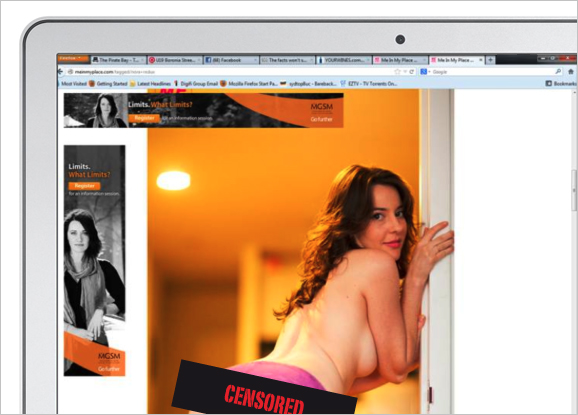
Every medium is out to convince you that their category is the best way to spend your money. They will always have a pie chart to prove it. It’s in their interest to have you spend more of your marketing pie with them. This will increase their commission, irrespective of whether it will increase your return.
For instance, Google Adwords looks a cheap way to buy eyeballs. But if your Adwords campaigner gets into a bidding war for the most popular keywords, you’ll spend more than the same number of leads from less popular search terms. Does the supplier care?
You might think the answer is to use media specialists who charge by time. Like lawyers, they’ll make more the longer their process drags on. More meetings, less decisions, the bigger your bill.
There are now more types of specialists than ever, each fighting for a bigger share of your budget – SEO, PPC, SEM, online content, online ads, email lists, data analysts, mobile, apps, ambient, ambush, experiential, waterproof stickers on urinals…
Which mediums are actually best for your business challenge?
I recommend looking at where to spend a clients’ money from this perspective:
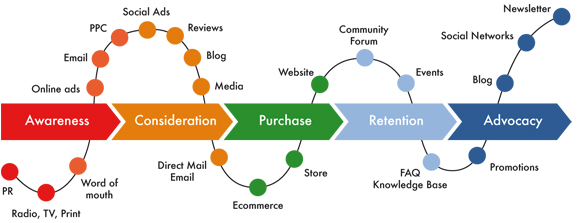
Synergy comes from the right mix, at the right time, with the right creative message. Beware commission driven specialists selling one solution to solve every problem. You’ll get less than you pay for.
Glenn Mabbott
Creative Director & Principal
UNOmarcomms
This article first appeared in AdNews
Read MoreSurvey reveals SMEs fail to measure ROI of online ads
A Yellow Pages survey of 1,800 Australian business owners* has found 69% of small and medium enterprises don’t measure the return on their online ad spend. What’s really surprising in this era of accountability is the finding that only one in 10 base their decisions on where to advertise on the ROI delivered.
What amazes me is the disconnect between business owners increasing desire to do more with less and the missed opportunities these findings reveal.
Advertisers keep telling me they love advertising online because it’s so much cheaper than traditional media. It might be cheaper to buy an adword campaign than a press ad, but are they getting a better return from those clicks?
Do you know which half of your advertising works?
The age-old saying “I know only half my advertising works, if only I knew which half” is just as true of online ad spending as off. The good news is it’s much easier to measure ROI of online marketing than the kinds of activities you used in the past. New technology makes it possible to know what works online and why. Business Intelligence means your spending can truly become an investment with predictable returns.
So if you count yourself amongst the majority of SMEs that don’t have a digital business strategy, maybe you should make it a priority to develop one. After all, there aren’t many things you can do so quickly and effectively that will leave the majority of your competitors behind.
How to measure your marketing ROI
New technologies have also made it much easier to track the performance of your offline advertising and promotion activities. We recently completed another test market campaign for an FMCG customer. In the past it was only major brands that could afford to put in place the kinds of tools needed to measure the ROI of integrated campaigns. Today even challenger brands can track the performance of programs that largely use traditional media because online research, scan data, real time field force reporting and analytics tools are no longer cost prohibitive.
The test and learn approach we have taken with this brand over the last few years has helped lift them above the pack. From being one of half a dozen small players competing for share against a long established multinational, our client is now a clear number 2 in their category. Do you know how much of your marcomms budget is working? There are no excuses because now you can.
* Survey published December 2010


"There are known knowns; there are things we know we know.
We also know there are known unknowns; that is to say, we know there are some things we do not know.
But there are also unknown unknowns – the ones we don’t know we don’t know."
While you may not like his politics, this famous quote from Donald Rumsfeld preceding the US invasion of Iraq perfectly sums up the dilemma faced by business owners today.
People are punch drunk from 5 years of relentless financial destruction of the world’s capital markets. Meanwhile, technology, and especially the digitisation of the world, has seen the pace of change of commerce reach incomprehensible pace. Is it any wonder business managers are floundering?
Challenger brands are making the most of this time of change to gain an advantage over competitors
Many business owners still think they can wait things out until things return to “normal.” What they don't know is the new model for success demands the ability to try new things, quickly and often.
Renee Todres heads a team of digital specialists at Tipping Point that have been helping businesses transform often complex transactions with their customers into simple ones. From BT to Elle Bache, once complicated business processes are being replaced with simple, intuitive interactions that make customers feel in control. Renee makes a wonderful observation –
"to learn you need to listen to yourself less."
Tipping Points approach is to add value by finding new insights. One way to succeed today is to recognise the limitations of your known knowns. Then seek out specialists that can help you discover the unknown unknowns. Get to know the ones that can help improve your position against your competition. And have the confidence to act on those new insights knowing the biggest threat to businesses today is business as usual. The Aussie attitude that she’ll be right now almost certainly guarantees failure.
I'm not suggesting spending all your energies on research. We’ve all seen managers fall into the paralysis by over-analysis trap. Too much data can actually hinder making effective business decisions. According to IBM’s 2012 global survey of 1700 CEOs, asking customers what matters to them is now more useful than financial analysis.
"Of course we need information and insight, but what we need most is the capability to act on it."
Unit head, Government, Hong Kong
In the words of Boston Consulting, today in business “the spoils go to the nimble.” We have found our challenger brand clients are winning by trying new and interesting things, fast and often. In the past you needed big budgets and big balls to try something different. There are now technologies that allow marketers to test new strategies while limiting financial risks.
As Renee and other niche specialists have shown me, it’s surprising how much there is to know that the big brands don’t, simply because they aren't looking.
Read MoreAll those for firing the Marketing Managers? Any against?


When they leave the office for the holidays, many marketing managers won’t realise their role may be restructured out of existence in the New Year. Over the Christmas break, CEOs around the country will be re-appraising who is an expendable cost to the business, versus who is an income generator.
Who will defend so many marketing managers when the case that has been building against them throughout 2012 is so strong?
Here is my snapshot of some of the evidence CEOs may be considering as they weigh up whether to fire their marketing managers:
Evidence A
Many of the tasks that CEOs thought only marketing managers could do can now be Googled. From 99 Designs to freelancer.com any CEO can buy marketing stuff cheap. Whether it’s designing websites or mailers, SEO or adwords, printing or promotions, everything is just a keyword search away. Who cares if you don’t know which half of your advertising works now you can buy it direct at third world prices?
Evidence B
According to this year's Roy Morgan annual professions ranking, marketers have failed again to rise much above used car salesmen. What CEO wants someone with less credibility than a real estate agent on their team? Consider this evidence alongside the growth in Australia of the casual workforce and outsourcing generally.
If you must have a marketing manager, why not buy by the hour, save on fixed and overhead costs.
Evidence C
CEOs have never believed marketers anyway. Fornaise regional survey of CEOs in 2011 found 75% did not value marketing managers opinions at a board level. In July this year the number had increased to 80%.
In November a follow up survey found seven in 10 CEOs hold themselves "somewhat responsible" for marketers’ poor perceived business performance because they have given up on holding their marketing managers accountable. CEOs gave up measuring the performance of their marketing managers. If it isn’t measurable, it won’t be long before the accountants decide marketing managers are an expensive indulgence a lean 21st century business can do without.
Evidence D
Business confidence is at it’s lowest level for four years. More companies went out of business in Australia in the last quarter than any other.
"She’ll be right" is now more wrong than ever. CEOs will have to change the way their business operates to survive. If they don’t know what marketing managers do, it’s an easy place for them to start cutting. As AdNews reported, one recruiter said recently, “companies want to hire revenue generators, and see marketers as passengers not drivers.“
Evidence E
How many CEOs actually know what marketing is? Consider one of the 4 Ps of marketing, price. In the FMCG industry, paying a rebate to Woolworths for a price promotion is still considered a marketing investment, not the sales tool it is.
Evidence F
Consider the other 3 Ps as they apply to businesses today. When do CEOs involve marketing managers in product development, or distribution innovation, or the building of a Business Intelligence driven CRM program? These new silos now fall under Strategy and Innovation Manager or the Supply Chain and Technology Integration Manager or the Chief Information Officer.
Is there a case for marketing managers?
The evidence doesn’t look good if the CEO doesn’t realise marketing managers can add value by thinking across silos. enabling the parts to work in synergy.
The Fornaise study found CEOs “think marketers have continuously failed to unquestionably and consistently prove in the boardroom that their marketing strategies, activities and campaigns generated actual business growth.”
To grow today you have to become a successful challenger brand. To be relevant today marketers have to champion at the board level the power of marketing to create a challenger brand.
If marketers aren’t in the boardroom, either the accountants, the salesmen, even the IT department will contend they need more of the budget to grow the business. Why not take it from the marketing pot, it’s just an artsy fartsy waste of money after all? Isn’t it?
12 days of vintage Christmas ads

Have you heard about the uproar surrounding the latest 'sexist' Christmas ad for ASDA in the UK? Here's your chance in case you missed it.
It seems that history is repeating? Here's a fun look at UNO's 12 days of vintage Christmas ads. They certainly gave us a few laughs!
On the 1st day: What more could a girl ask for?!

On the 2nd day: Should you be tempted to over indulge...

On the 3rd day: What could it be?

On the 4th day: It's the thought that counts!

On the 5th day: The perfect stocking filler!

On the 6th day: Foam filled fun for all the family!

On the 7th day: Taking care of Christmas!

On the 8th day: A shame they didn't make them for dogs too?

On the 9th day: Say it with... spoons?
On the 10th day: We all know that Santa wears red and white because...
On the 11th day: We're sure ASDA would approve!

On the 12th day: Relax in the comfort of your own home
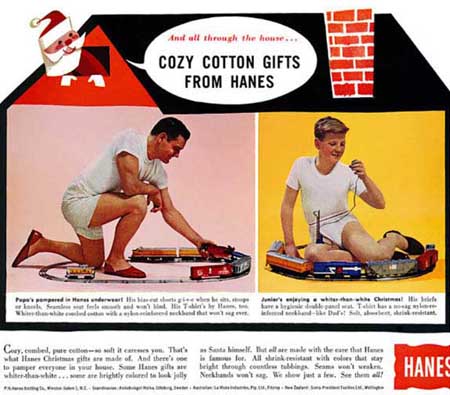
Oh what the heck! One more!
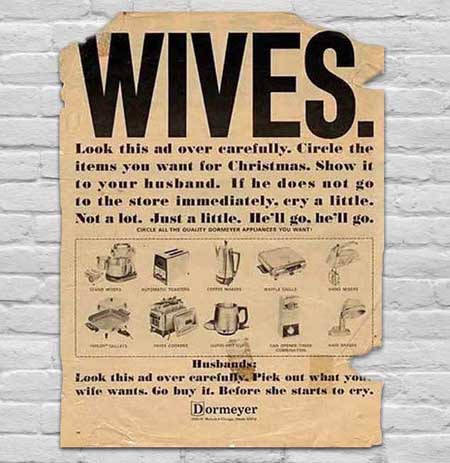
Big businesses' loss can be your gain


In the last few weeks business owners have been warned by the head of one of Australia’s biggest mining corporations that if we don’t change our business models we will die.
So who do business owners turn to for advice? In AdNews the marketing head of one of the big 4 banks reveals agencies don’t get digital. And the CEO of one of the biggest media planners in the country said "anyone in the media industry who claims they know what is happening is lying."
How many consultants does it take to change a light bulb?
Too late, fibre optics and LEDs have changed the market.
Every manager who has grown a business understands the value of seeking advice from specialists, you can’t be an expert at everything. Today we have the added problem that most so-called experts learnt their skills pre-Internet. Most business coaches are dinosaurs, as the world of commerce changes at ever increasing pace, conventional methods won’t save your business if the customer has evolved to a new way of life.
Think biz is tough? It’s even tougher for big businesses
Don’t panic. Unless you are number 1 in your category, you have less to lose by changing the way you play to fit in with the new rules that are being written by the customer. If you are a mid sized business today you have an advantage that in the past was a handicap. Yes, smaller is more nimble. Big businesses with big investments in infrastructure, systems and sunk costs can’t easily re-invent themselves. Think of all those silos of managers in big companies who have to hang in there for another 5 years because their super was decimated. They are a dead weight that slows down change.
Companies falling out of the top 3 in a given year:

Market share leaders that are the profitability leaders:

Forget the past, where’s the future profit coming from?
Most likely from something you are good at now, but not focused on. If you are a mid market player and still in business, you obviously have enough retained knowledge to draw on. Here are some examples of where UNO's clients have found profit opportunities:
- For a manufacturer it was cutting out the wholesalers.
- For a premium winemaker it is leaving Coles and Woollies to the major brands and growing high margin club membership.
- For a financial services B2B supplier it is repackaging bite-sized insights for the consumer market.
Today more than ever, get to know those who know
What you most need now is a trusted advisor who can draw upon a network of today’s specialists. To grow today, you need to re-invent your model, refresh your offer and relaunch by integrating traditional and new ways to market.
Forget incremental improvements. A few percent saved on input costs and a couple more from efficiency gains won’t save you when the competition pockets a whopping 30%+ of margin by removing an entire step in the route to market.
There’s an idea. Better to do it now, or be done over?
For a better career, get a life as a sponge


Many people in marketing seem to think they are judged on what they will do this week, while many managers think it’s about avoiding mistakes by doing very little. Rather than worry about what others may think of your actions/inactions in the short term, a recent conversation with a self-made squillionare reminded me of what it takes to become successful in business life. It’s not about you – soak up other people’s experiences.
Curiosity is the key
This founder of many businesses was as keen to ask questions about my challenges, as I was to learn about his successes.
Creative people continue to take the passive role of waiting for a brief, hoping the application of their current skills to their next project will bring the recognition they deserve. Meanwhile marketing managers act like thought police, determined to minimise all risks on their watch. So the brief ends up something like this: do something safe, measurable (as in lets make sure there are no nasty surprises), something a bit like someone else has already done, and all for less than it cost last time. This lack of desire to explore the unknown is killing creativity in Australia. Yet it’s creativity that builds wealth. Avoiding risk guarantees smaller returns, or none at all. Cutting margins does not create wealth, it just means you’ll spend your way to mediocrity a bit slower.
Today for a business to thrive it has to be a challenger brand. That’s an old company doing things in a different way, or a new one doing new and interesting things. Being a challenger is not about fine-tuning or polishing what you’ve always done. A business that’s in a well-worn smooth groove, just like a career, soon discovers it’s actually in a rut, going the wrong way. New isn’t always better, but better is always new.
If you’re curious to know what it takes to be better at what you do, you’ll do better than your peers. Curiousity, the squillionare says in one of his many books, is what it takes to succeed. It’s more than just appreciating that you don’t know everything. It’s wanting to know what Donald Rumsfeld memorably described as “the unknown unknowns.” Rather than selectively listening to those around you that you feel comfortable with, avoid making bad decisions by seeking out the wisdom beyond your network.
If you’re an art director, it’s time you hung around with some media gurus, marketing managers with entrepreneurs, accountants with digital user experience designers. Innovation after all comes from outside an industry, it’s not found fiddling around with what your category already does. And today if you don’t innovate you and the business will die.
I’ve often explained my life as that of a sponge. From childhood I wanted to know everything about everything. As I’ve met people with passions for things I know nothing about I’ve soaked up drops of wisdom. You’d be surprised what lateral connections from my sodden sponge can draw just the right drop, at the right time, to create an innovative answer. Whatever your role or experience, take every opportunity to learn from others. It helps to be open about your ignorance in front of experts. I’m always asking the silly questions. I usually find if they really are experts, they will gladly share their wisdom. Soak it up.
What's more important to CEOs - financial analysis, or customer insight?


We now work in a world awash with data. But too much data can actually hinder making effective business decisions. According to IBM’s 2012 global survey of 1700 CEOs, asking customers what matters to them is now more useful than financial analysis.
"This is now a continuous feedback kind of world, and we need the organizational nimbleness to respond."
CEO, Financial Markets, USA
"Of course we need information and insight, but what we need most is the capability to act on it."
Unit head, Government, Hong Kong
So how can you get to know your customers better? While there is no substitute for face-to-face, the survey found CEOs of outperforming businesses believe social media is the next best way to gather insights. More importantly, these insights are helping them take action.
In the words of Boston Consulting, today in business "the spoils go to the nimble."
Why the CEO has to be the chief blogger

Successful social media strategy starts at the top of every business
It's misguided to think social media can simply be delegated to the youngest in the business, or outsourced to a digital agency. Social media is simply another relationship management channel. So it makes sense the strategy of what will be discussed in social media and what won't lies with the CEO. Social media is the one place the CEO's message can get through direct to the individual, without being filtered.
So if you're the CEO, consider this medium as your direct way to have a personal conversation where you can champion what you believe in. Before you begin, reconsider what you want your business to be known for. Ask yourself what is at the heart of why people should buy from your business, rather than your competitors?
Recent research by PR firm Weber Shandwick shows social media has positive impacts on business. (Click to enlarge.)
This simple checklist will help frame the social media agenda for your business
- What is the purpose of the business, what will success look like?
- What is the business strategy?
- What does the business believe in?
- How does it add value?
- What are its beliefs and ethics, its reason for being, its mojo?
- What is the business story? The way you express your differentiation, the reason for customers to choose you.
- Who does the business want to help? Who do you want to leave for your competitors to lose time or money trying to please?
- Who does the business want to influence? The gatekeepers to your prospects, or perhaps the well connected people who might bad mouth you through ignorance?
- Who does the business want to work with? Do you have affinity partners or associations you can share your blogs with?
- What kind of people does the business want to attract? It now matters what you look like in the blogoshere because it's the first place most potential employees will check you out.
Reputation risk has been elevated by social media
As equally important as having a social media presence is what you say. Being active across social media brings new risks. What is published online stays online, potentially forever. No wonder reputation risk is now the number one concern of CEOs globally according to the latest report from Deloitte.
Perhaps if more CEOs took control they would minimise the risk of staff who know less being the main originators of social media conversations. The CEO is best placed to set the agenda, staff can then follow through.
According to research by Weber Shandwick, more than six in 10 CEOs are already posting content on company websites. Yet only 18 per cent of the CEOs surveyed participated on social networks. The chart above gives an overview of the survey findings. Interstingly, 80% of staff want to see their CEOs on social media, largely because it's where they want to keep up to date.
I feel most CEOs I talk to are missing this powerful opportunity to spread the truth about their business vision. Social media is where these truths are shared and discussed, it's one place the leader can champion their cause with passion.
Read MoreWhat makes mid-sized businesses more profitable than big?

So what is a mid-sized business?
GE Capital has been defining the mid market in Australia as businesses that have annual revenues of between A$10 million and A$250 million. Average firm turnover is about A$41 million. Despite comprising just 1.4% of companies by number, mid-market firms provide one in four full-time jobs and contribute A$425 billion annually to the economy.
The federal Department of Innovation, Industry, Science and Research, which has a broader definition of medium-sized businesses as those with between 20 and 199 employees, puts the economic contribution of the mid-market considerably higher.
The mid-market campaign we successfully managed over four years for IBM targeted businesses from 99 and right up to 999, the large corporate and government sectors that IBM traditionally owned really kick in around 1,000 staff.
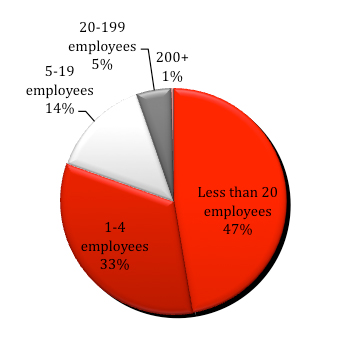
Australian Business
Most mangers still hold the belief big means better. We hold a belief businesses can only succeed today by being nimble. The reason for this is the profound change the Internet has brought to our lives. The world even quite recently was quite slow to change, and most businesses were relatively simple. Today we all compete in a world of rapid paced change and increasing complexity. So the old big business model of slowly and effectively finding savings from gradual improvements to products and services and small efficiency gains in management and procurement are no longer enough to stay competitive. Let alone stay in business.
The evidence for the decline in profitability of big business is seen in this chart. It shows one third of market leaders in their category in 1950 were also the most profitable businesses in their category, whereas today being big almost guarantees you’ll be struggling to make a buck.
Market leaders that are also category profit leaders:
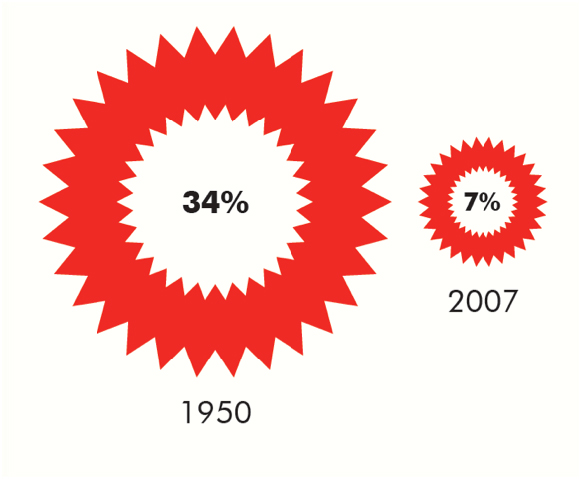
What makes big business vulnerable to challenger brands
George Shinkle is a Lecturer in the School of Strategy and Entrepreneurship at the Australian School of Business. He has been studying why big business is failing.
“Organisations grow large by becoming more efficient, so when you’re really focusing on efficiency you typically become less and less flexible. The rules and processes and procedures become more and more about keeping you efficient, constraining your ability to be flexible,” he says.
“If you talk to the CEO of a very large firm, they don’t feel as if they’ve got direct control of what the organisation’s really doing. They give guidance and they set policy but the organisation has some variance on how well they follow those things,” says Shinkle.
The learning you can take advantage of is that managers in large companies try to hide from change. Which is why, if you’re running a mid-market business, you will create your own advantage by actively seeking out things to change to differentiate from the competition.
Not too big, not too small, mid-sized business is just right
Big business is still obsessed with conformity, groupthink and doing things the way they have always been done around here. Small businesses may be the birthplace of great ideas, but they usually don’t have the scale or resources to commercialise those insights.
The mid-sized business is perfectly placed in the middle, where the distance between innovative thinkers and management that can actually make decisions is short. Unlike small business, resources aren’t so slim ideas can’t be trialled without damaging the existing business of running the business.
At a CEO Institute meeting Susan Lenehan told me the biggest frustration of the CEOs of Australian arms of global businesses she mentors is their total lack of autonomy. They are prescribed what to do by head office irrespective of local circumstances. In her words, it’s the pinnacle of the “bully culture” of big business management.
Challenger brands will prosper by taking risks
This is the great opportunity mid-sized Australian businesses are exploiting, they can leverage their ability to try changes, while the big guys are stuck in the inertia of business as usual, with its five year plans, annual targets and quarterly reporting. By challenging traditional big brands, Australians can be globally competitive in a world that is changing daily.
The real successes come from maximising returns by minimising the risks of change – we developed the challenger brand formula for growth for this very reason.
Why you need brand awareness before sales

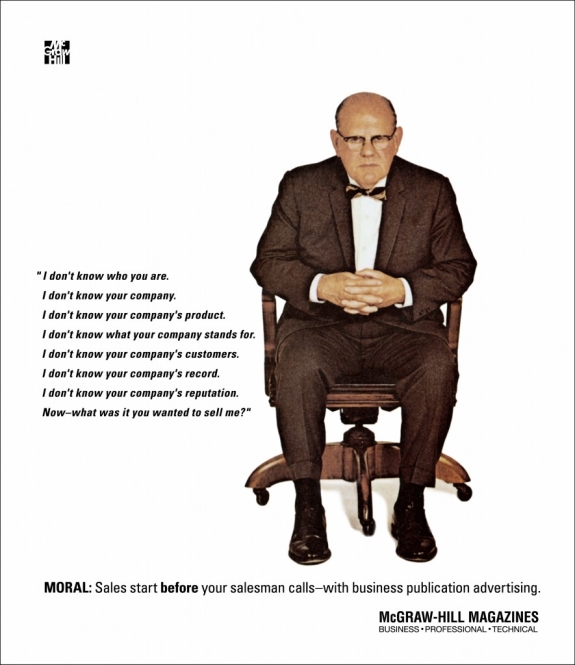
This famous ad for advertising with McGraw Hill appeared in 1958
Business owners sometimes need reminding of the timeless challenge, why would a prospect buy from you rather than one of your competitors?
For 50 years the simple answer was to spend more on advertising than the rest of your category. As marketers now realise, simple strategies in this Internet enabled world now require more complex solutions.
Challenger brands can succeed today without big ad budgets
The good news is smaller businesses can now be successful challenger brands with smaller budgets than the big brands. The staring point is to differentiate. with a singleminded story that prospects will value. you can then apply a test and learn approach to marketing across multiple mediums. Smarter strategies applied with insight will now succeed while big spending inflexible brands continue to struggle.
Read More73% of marketers say more has changed in 2 years than the past 50


Who are you going to call to advise your business on how to grasp the rapidly expanding number of marketing communications options? Usually you’d call in an expert. However, the pace of change right across the business world and the complexity of competing solutions is so great how can any individual be an expert? And big businesses may have lots of individuals, but we all know they rarely work as a team let alone communicate well with clients.
Marketing professionals are confused
A survey* by Adobe of 1000 marketers in the US shows the crisis in confidence of the marketing services.
“Marketers are facing a dilemma: they aren’t sure what’s working, they’re feeling under-equipped to meet the challenges of digital, and they’re having a tough time keeping up with the pace of change in the industry. What’s worse, no one hands you a playbook on how to make it all work,” says Ann Lewnes, Chief Marketing Officer, Adobe.
Digital marketing is full of novices
Adobe’s survey found less than half (48%) of marketers who consider themselves primarily digital specialists feel highly proficient in digital marketing. Most digital marketers haven’t had any formal training in digital marketing. No surprise really, it’s so new and evolving very few places can teach it.
The problem for business owners is how to leverage what’s new when so few people, if indeed any, know what will work. The people whose job it is to know, professional marketers, revealed in the survey the same old issues are today’s top challenges. 82% cited reaching their customers as the biggest challenge, then the uncertainty of knowing if their campaigns are working (79%), and measuring campaign effectiveness (77%) and marketing ROI (75%).
The answer for marketing your business?
Today every part of the business has to take risks
Whether it’s your accounting systems, distribution, IT or marketing, everything now is facing change. It’s hard enough to know the right question to ask anymore, let alone have the right answer. The safest option today is counterintuitive – it’s to realise you can’t predict winners anymore.
So the safe approach with marketing is no longer to set and forget. Rather than taking a long time and spending a lot of money attempting to develop the one perfect solution, try a lot ideas and mediums. And try them quickly and often.
Test. Learn. Adjust. Test again.
Learn to feel comfortable with failures. Set out to make the risks small so the stakes aren’t too high. Then go for it with a test and learn approach to marketing. The more often you fail the quicker you’ll find yourself challenging the competition and being successful.
* Source: Adobe and Edelman Berland, online survey among a total of 1000 US marketers. Marketing Staff (n=499), Marketing Decision Makers (n=436), Digital Marketers (n=263), and Marketing Generalists (n=754). September 2013
Read MoreAre fashion retailers training customers to buy on sale?
I've written in the past how Zara led the world by applying just-in-time manufacturing and data analytics to bring us fashion forward product design. This has given them an advantage over traditional retailers by circumventing the traditional seasonal approach to fashion.
Instead of waiting for the leading designers to reveal on the Paris catwalks what we'll be wearing next year, Zara's innovation was to take the Dell Computer model. Zara replenishes stock in their stores every week, see what sells, then make more of what is popular. Rather than sitting on large quantities of stock hoping people will like what style you've backed, Zara take a test and learn approach. They never back one colour or style for a full season, Zara simply adjusts what they manufacture on the fly to what the consumer wants this week.
Fashion challenger brands risk destroying the advantage they have created
Retailers are losing the power to maintain margins by encouraging a buy on sale mentality. According to Robin Givhan, the only clothes critic to win a Pulitzer Prize, with the constant turnover and turnout of items due to the ever-quickening fashion cycle, there’s no need to buy anything at full price anymore.
While bloggers and fashion critics have used social media to drive awareness and demand of the weekly fashion cycle, retailers she says are to blame for the loss of their pricing power.

"Retailers talk a lot about how the availability of show images pique the interest of consumers before the clothes are available. But I blame retailers for creating a system in which they want spring clothes in November and more shipments every five second[s] and then putting things on sale when they've only been on the racks for one second," said Givhan.
Consumers usually don't know how to establish the value of something, it's actually within the power of the seller to frame the price that they will believe is fair.
Innovate for pricing advantage
If you have innovated your way to a price advantage, don't throw away your smartly won margin. Instead, decide how you can frame the price as fair value, for instance in terms of more for the same, or faster for the same, or better for the same. Offering something for less is an approach fashion retailers are finding comes at the cost of not just profit, but long term survival.
Don't drive your category to the bottom the way Persian Rug stores have, where in every corner of the world the SALE sign on the window now means OPEN. Here's one I snapped in Hong Kong...
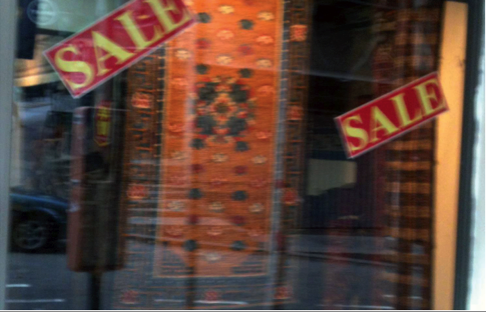
Do you have a clear point of difference to drive growth?


Staying in business has never been harder. 10,632 companies collapsed in the 12 months to March 1 2013 - ASIC also reports the number of firms being placed in administration is more than 12 per cent higher than during the GFC. Over the last few months an average of 44 small businesses were closing every day according to ABS data.
A change of government won’t change the fact the pace of change is still accelerating, the choices for customers continue growing and the decisions we all face in life are more complex than ever.
Where will your business growth come from?
These are your options:
- From existing clients
- By getting new clients
- Expanding to new locations, (interstate, overseas)
- Developing new services
- Making acquisitions
90% of businesses focus on number 1, selling more to current customers or charging them more. Yet the upside is limited.
Of the small number that go down the acquisition path most are disappointed. An AGSM survey of mergers and acquisitions showed after 3 years just 10% exceeded expectations of synergy and only 10% - 15% met expectations. The rest had failed or were in a death spiral.
Expansion and new product or service development often require a large commitment of resources and takes attention away from the existing business.
Which leaves new business as the key driver of growth. Marketing is the one proven method that can drive scalable new business growth. A successful new business program begins by confirming you have a differentiated offer relevant to today’s customer. Every prospective customer has more than one choice. What does your business have that makes it so special they have to choose you?
Customer alignment, simplification and innovation
Here’s a simple technique that GE Capital employs to keep their business differentiated in this time of rapid change. 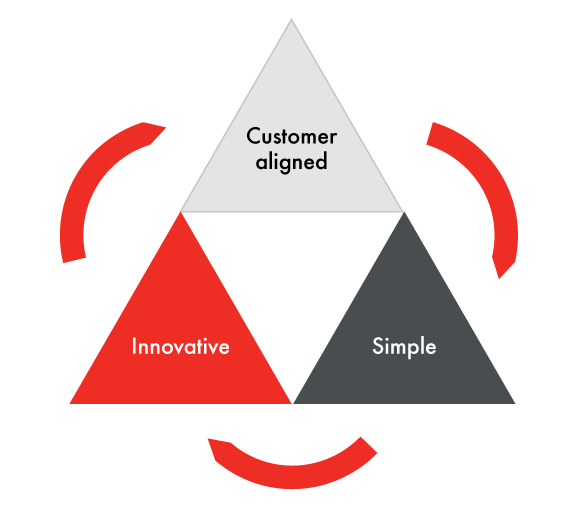
Customer aligned
- Employees know which customer segments we serve and what their top 3 needs are
- Our organisation rallies around these needs (customer facing & support departments)
- We continuously track customer metrics at a transaction, product and business level
- We respond to customer feedback fast
Simple
- We do less, better
- Our customer processes are intuitive
- Our internal processes are as easy as our customer processes
- We routinely identify and eliminate the bottom 30% flow value processes, reporting and meetings
Innovative
- We encourage, empower and reward staff who challenge the status quo
- We launch new ideas fast (< 45 days average)
- We have a full pipeline of ideas linked to incremental volume
- We invest a significant amount annually on innovation
Differentiation for new business growth
Don’t hold your breath waiting for the government to simplify regulation, align their policies with your needs or innovate the country’s way to prosperity. Look at your current structure, reconsider what the business currently offers and determine a positioning that will differentiate you from your competition. Today.
This is just one of the tools UNO uses to ensure when our challenger brand clients invest in marketing, the returns will be worth the effort.
Read More
There are few categories more sophisticated at marketing than fast food. For 50 years McDonalds has been fine-tuning their brand marketing driven machine in Australia. Other brands may talk share of voice or share of wallet, McDonalds is famous for wanting the largest share of stomach in the country.
The business is a great example of how to upsell, cross sell and find new reasons for customers to visit. From breakfast muffins through burgers and happy meals to soft serves and late night treats, washed down by McCafe coffees in between. From Pasta Zu to chicken nuggets to who knows what else a machine can transform animal castoffs into.
Want fries with that?
All of these tactics are an excuse to get more people to buy fries more often, it's where the big profits are made. Makes you wonder how anyone can compete? If you don't work for an omnipotent global business there is evidence of hope. Roy Morgan reasearch released in August 2013 shows just how well new competitors can do by choosing to take a challenger brand positioning.
A case study in how positioning can outsmart the big brands
Hungry Jacks came much later, and has never had the footprint or the ad budget to compete head on. What has worked long term for Jack Cowin's fast food challenger up against a global heavyweight, is a differentiated positioning that gives it a clearly defined space to compete in. "The burgers are better at Hungry Jacks."
From day one they lived up to that positioning statement, better burgers; either with biigger burger patties, actual lettuce instead of a miserable pickled cucumber, to the first Angus beef burger, then bacon and now organic beef. Single mindedly niche focused, and better for it in the minds of customers, who consistently rank Hungry Jacks above Maccas.
Long-term customer satisfaction in fast food comes from smart positioning. Chart: Roy Morgan, August 2013
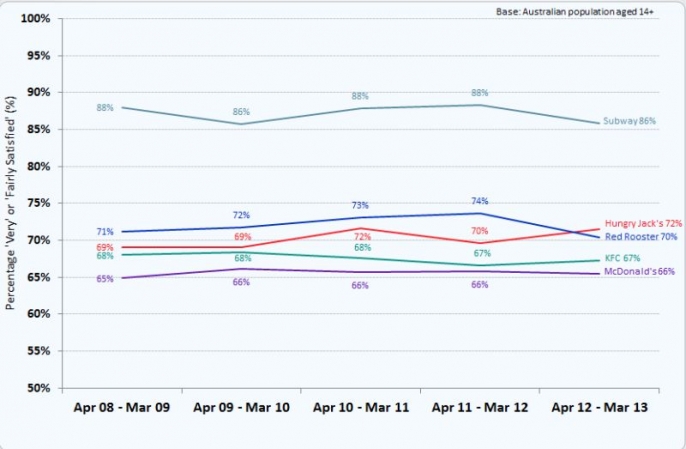
Challenger brands create new terms to compete on
Subway shows the rewards of zigging when the competition zags. While fast food leaders spent their product and promotion strategies on short term price promotion or new themes, from changing with the seasons, think summer pineapple burgers to following fashions, think cajun sauce. Meanwhile Subway went where no fast food had ever successfully gone before: the good for you. positioning.
The chart shows the relative strength of Burger King's "do less of the same, better" approach, and Subway's "do something completely different" model. Both are positively recognised by the consumer and continue to command a price premium to the slower to innovate fast food competition.
What size is a typical marketing budget?

How much is the right amount to invest in marketing?
Depends who you ask. The CMO Council asked hundreds of chief marketing officers around the world across categories how big their budgets are. While this was post GFC, it gives us a useful benchmark when planning ahead.
The starting point for setting a budget uses a top down approach based on your revenue. The chart we've made below shows the percentage of revenue invested in marketing by business to business firms.
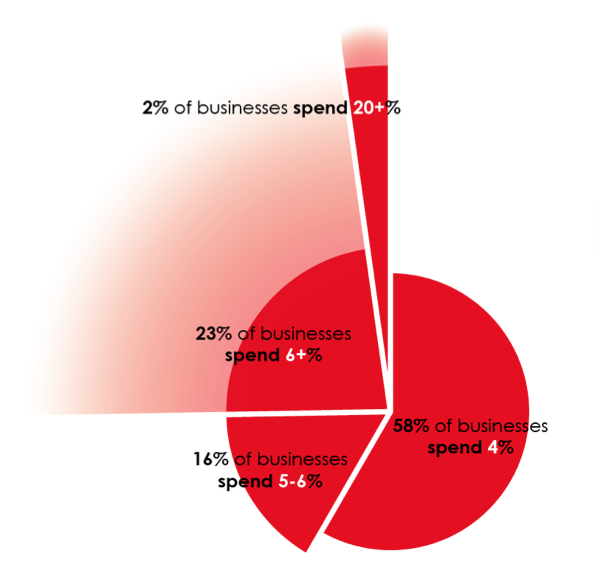
Percentage of revenue invested in B2B marketing
2010 CMO Council Survey
Interestingly, the consensus view amongst those surveyed was that a new brand launch required a minimum investment of 20% of revenue. As we can see from the chart, either there aren't many new brands launched in any year, or the majority aren't spending enough to ensure they don't fail.
Another way of determining the right size of budget is to compare how much is spent according to the size of the business.
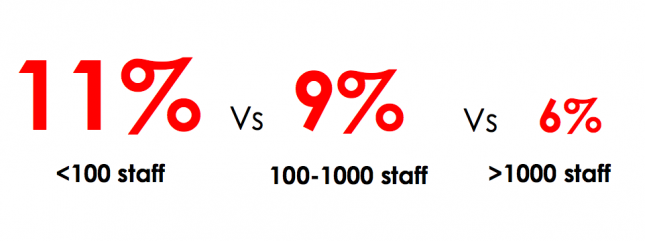
Percentage of revenue invested in marketing by company size
2010 CMO Council Survey
We shouldn't be surprised that as businesses establish themselves and grow, the number of staff grows. As they grow, the relative proportion of their revenue invested in marketing decreases. Marketers understand the long term nature of judging the return on investiment in marketing. Marketing that is consistant delivers compounding returns, a relatively large initial spend will pay dividends in the long term.
Average marketing budget for FMCG brands
A Go-to-Market survey in 2012 found this spread of investment by revenue of FMCG brands:
% of revenue % of companies
No budget 1.1%
0 - 2% 28.6%
3 - 5% 33%
6 - 10% 21.1%
11 - 15% 8.6%
16 - 20% 4.3%
20%+ 3.2%
You can use these percentages as a starting point for framing your marketing budget and then compare to the result of viewing your requirements from a bottom up view.

Bottom up marketing budget approach
Create a list of activities you plan to undertake across your integrated marcomms plan and estimate the required investments for each. Balance and adjust for frequency, reach and coverage. Consider set-up costs for all mediums and a realistic figure for content creation and creative, remembering the better the idea the less times your audience needs to see it to get a result. Factor in research and tracking and an allowance to have the flexibility to react and respond. Remember to allocate around half your total budget for labour, across both internal and outsourced agencies for development and management throughout the year.
Depending on the particular segment your brand is in, the consensus is a B2B marcomms budget needs to be between 3 and 6% of revenue and for FMCG between 6 and 12% to have at least a competitive share of voice.
Read MoreThe most and least trusted professions
Every year Roy Morgan releases a ranking of the trust Australians have for each of the professions. Advertising is down and real estate salesmen up in 2013.
Here are the jobs as they rank for trust in Australia
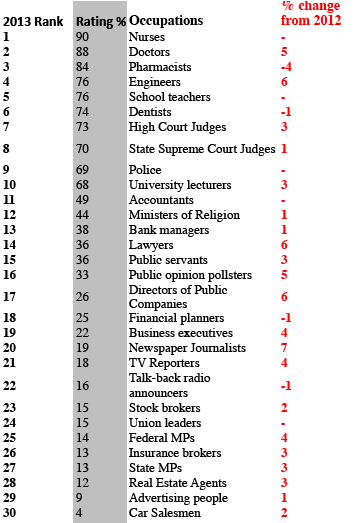
How does this compare on a global basis? See the global trust index.
Read MoreThe Naked truth on Rudd's interview for ads scandal


You probably already have an inkling the public rate marketers and ad people at the bottom of the trust scale for professions. You're right, they are down there with politicians. Something happened this week to reinforce the view that neither can be trusted, it's a classic example of an "whatever it takes who cares about the ethics" attitude.
Controversy blew up when Sydney based Naked Communications was exposed while working on a project for Labor when it offered video interviews with PM Kevin Rudd to online youth publishers in return for free online ad space.
Further blurring the lines between “an interview”, and an ad campaign, the agency wrote to Faifax owned The Vine they were “particularly keen for a deeper relationship (including putting investment behind your content on YouTube).”
They also encouraged the online publication to provide “access to pro-Labor or pro-NBN talent.”
When found with their pants down, Naked were fired by Labor. The Sydney Morning Herald’s political reporter, Jonathan Swan, who broke the story, said “it seemed very odd” that Labor was oblivious to the deals offered to online youth sites.
The agency’s CEO claimed no knowledge of the deal, blaming a younger staff member. Indeed, the day after it blew up the agency planner responsible was “no longer in the building”, having left for a holiday in the UK.
What has been adland's reponse to this question of maintaining standards?
Next day the Creative Director of Wonder wrote in AdNews “how much responsibility are we giving young and inexperienced executives? I think too much. Our industry is more impressed by 20-something backward baseball cap-wearing gamers that impress us with their social media savvy than wise old owls. Where are our wise old owls? Nobody could ever accuse the marketing industry as one that eats their young. Quite the opposite, we assassinate the old and we call anyone over 50 old. Mike Wilson (CEO) is Naked’s wise old owl and the bloke is only in his 40s.”
He then suggested the team at Naked vote Abbott to avoid a Labor backlash. This received some wise comments, my favourite from No Wonder of Paddington:
"Wisdom is not the province of age, and this is not an 'odd judgement error'. It's a failure from top down to create a culture of ethics... that at all times forces doing the right thing to trump making a splash for your client. Wilson may be the straight shooter he's characterised here to be, but as the leader of the pack, he's ultimately responsible for the culture that would spawn the actions of that 'rogue executive' who was shown the door"
"This isn't the first time that Naked has been guilty of pushing the envelope at the expense of common sense, and more importantly common decency. What's worse is that the creative drive to market at any expense has had a poisonous influence on the business in general, and in some corners legitimised the art of the stunt and the bad habit of erasing the moral line to such an extent that many of the young guns don't even know it exists."
"It's the agency that should take the fall in the end, not just the employee directly responsible, and encouraging them to vote for Abbott in an attempt to avoid the negative reaction from everyone that they richly deserve shows us all just how jaded the industry at large has become. Sad and sadder."
SMH's Swan labeled the agency “a bit wild west, they’ve got a cowboy reputation” and said they have a history of “doing things a bit off-piste”. Swan also mentioned the infamous fake Facebook Witchery coat campaign which duped both mainstream media and social media users in 2009.
When does online content become advertising?
According to the ACCC and AANA it’s one and the same in the eyes of the law, as we can see from the new Code on marketing communications that encompases social media.
Gabriel McDowell, MD of PR firm Res Publica pointed out the new risks inherent in attempting to leverage digital channels: “From a crisis management perspective, and based on the reported facts so far, I think the ALP has reacted promptly and appropriately to try to limit reputational damage to the Labor brand. They have made it clear they didn’t sanction the offending proposal and firing the responsible agency was a justifiable response given the seriousness of its misjudgement.
"And there can be no doubt that it is a whopper of a misjudgement because building trust and understanding between a brand and its public is the fundamental objective of any communication campaign and deliberately blurring the lines between editorial and advertising can only erode trust when it is uncovered.”
"It has never happened before. My mouth was on the ground. Young people are politically engaged and this is not the way to go about appealing to them. It is why we tend to shy away from the major parties."
She told AdNews it was "exactly the sort of thing that is killing media", but that brands generally grasped the value of editorial over paid content.
The challenge for the communications industry is while we may have self-regulation, only a handful of agencies are Accredited by the Communications Council. UNO is, Naked isn't and most clients don't appreciate the difference. As I commented to AdNews, "what's the point of having an agency Accreditation scheme when people arrive at work having forgotten to pack the moral compass. If we want to be regarded higher than real estate salesmen, which the latest research shows we don't, both clients and agencies need to keep briefs away from the irresponsible."
Will digital spell the end of editorial integrity?
This has all happened less than a week after Adnews editor-in-chief Paul McIntyre expressed a fear for the future of publishing as the title becomes a defacto re-publisher of PR releases and sponsored events. This is what he said in an open editorial:
"Change can be painful but equally stimulating. Just as long the industry knows where it’s all headed and in what direction it is pushing its industry media. It won’t be too far away, for example, when you all can hack back your budget for PR operatives. And PR types, brace for a much harder slog. Seriously, most of you won’t be needed. The deluge of PR-generated ideas and story angles is rising rapidly while the ability for business-to-business media to cover it is declining at the same pace. Don’t forget that. Okay, sorry, rant over."
Read More


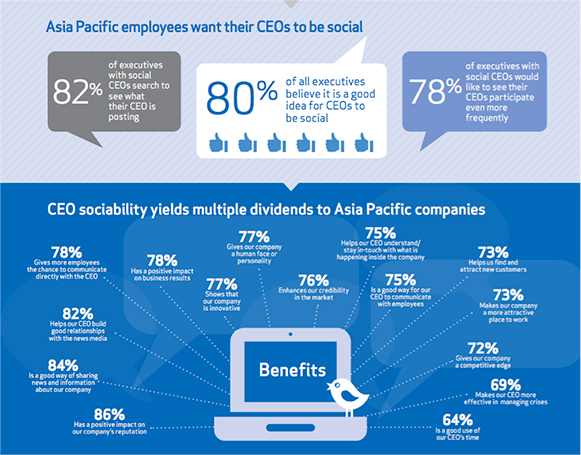
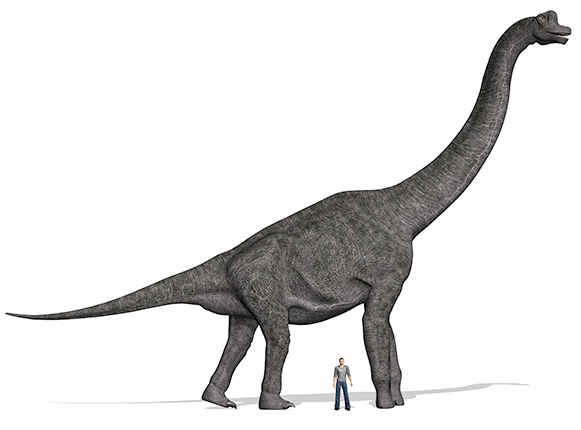





Scan the QR code for our contact details.
Download the Neoreader app.
© COPYRIGHT 2013 UNO marcomms Privacy